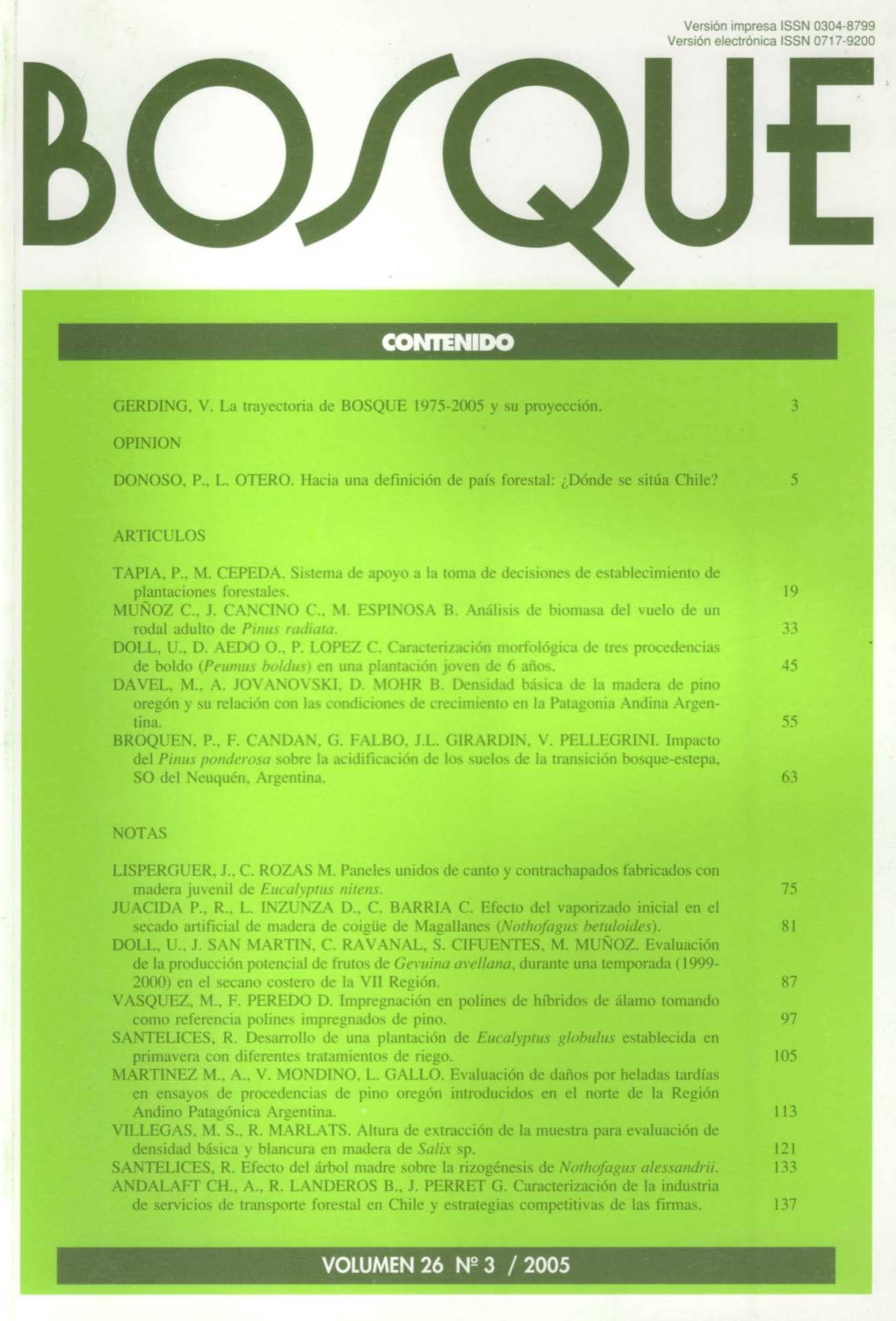Wood basic density of the Douglas fir and its relation with growth conditions in the Patagonian Andes, Argentina
Main Article Content
Abstract
Wood density of Douglas fir (Pseudotsuga menziesii (Mirb) Franco) growing in Patagonia Argentina and its relation with site conditions and dominant tree growth were studied. Wood samples were obtained from 84 dominant trees coming from 42 plantations located across the Andean region of the provinces of Neuquén, Río Negro and Chubut which constitute the distribution area of Douglas fir in Argentina. The mean mature wood density of Douglas Fir was 0,381 g/cm3. In each studied plantation, information about topographic, edaphic, climatic and stand variables were obtained. The relation among these variables and wood density was evaluated with multiple regression analyses. Results show that rings-width and site index were significantly related with specific gravity, and explained 52% of this attribute’s variation. Results also showed that an inverse relationship exist between site index and wood density: Better site index produce timber that has less wood density.

